Rethinking the IPCC report and the mastery of our planet
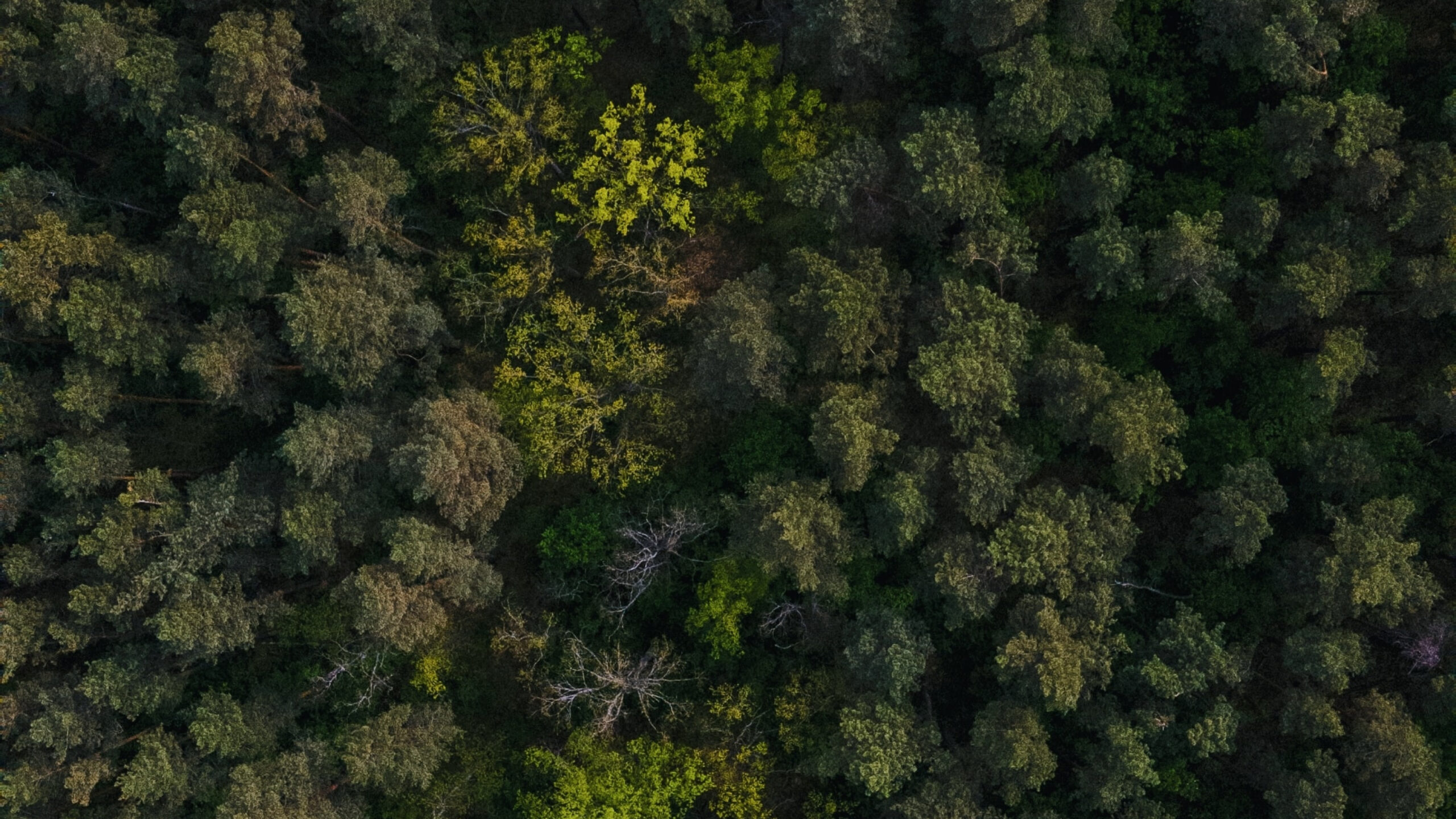
Written by:
Solar Foods
Liberating protein production.
There are scenarios of hope for humanity in IPCC’s harsh 2021 report, but they will require big decisions from political and industry leaders, as well as technological leapfrogging.
“The fact is that no species has ever had such wholesale control over everything on earth, living or dead, as we now have. That lays upon us, whether we like it or not, an awesome responsibility. In our hands now lies not only our own future but that of all other living creatures with whom we share the earth.”–David Attenborough
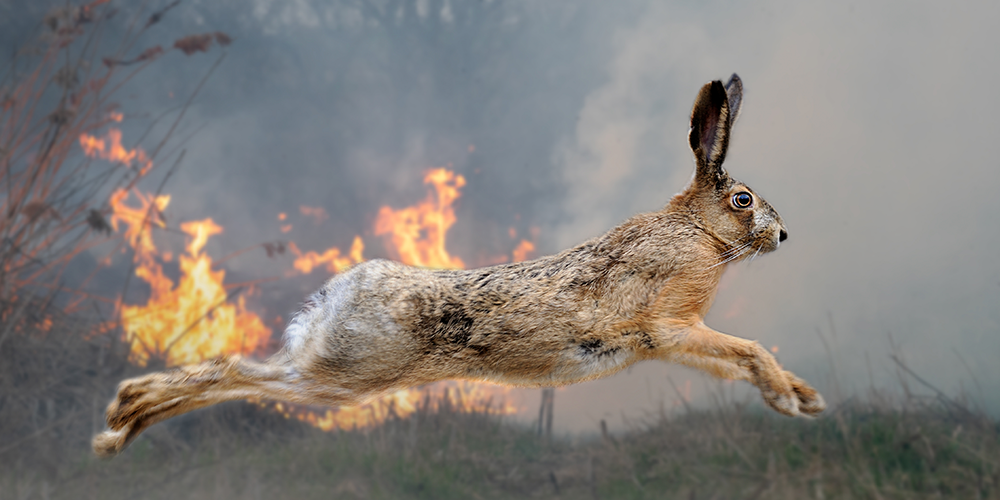
The summer of 2021 will be remembered as a sizzling one with heat records being broken again. The IPCC’s 2021 report had a dim prediction: even if the world cuts emissions by more than what governments are promising, it is still “more likely than not” that Earth will be 1.5°C or 2°C warmer by around 2050. Historically in the last 10,000 years, global climate has not budged by more than 1 degree. The warming effect is more pronounced on land and the further towards the poles you go. Lapland recorded its hottest day in July at 33.6°C (94.5°F) since 1914, which is 10-15°C hotter than average.
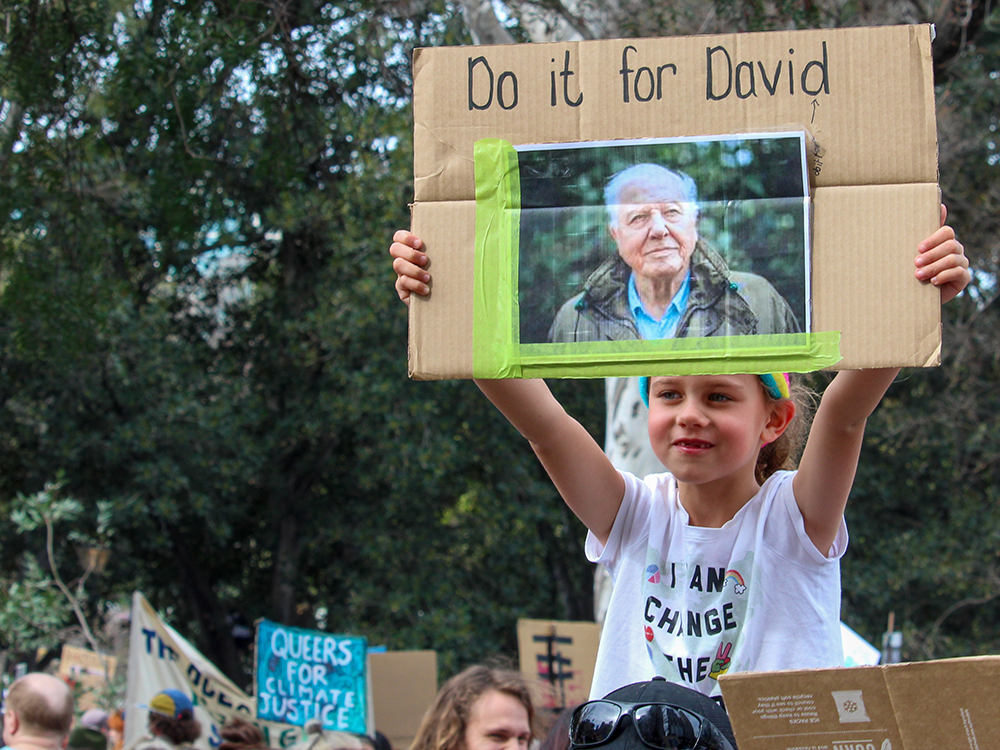
In David Attenborough’s witness statement, A Life on Our Planet, he calls on the world to address the single most pressing issue – land use: rewilding land to restore biodiversity.
The problem will magically fix itself only after we are extinct
As David Attenborough said in his ‘witness statement’ A Life on Our Planet a year ago: “We often talk of saving the planet, but the truth is that we must do these things to save ourselves. With or without us, the wild will return.” He hit the nail on the head. The Earth doesn’t need us. The climate crisis and the loss of biodiversity is an existential problem for humanity and humanity will be the one to solve it. Even if humanity wiped itself out with an all-out thermonuclear war, life on Earth would be as diverse as ever in just a few millennia.
At the present rate of human development, the crisis can get much worse too, when certain negative feedback loops are triggered. The hotter climate can set off forest fires and turn the Amazon rainforest into a savannah. If the permafrost in Siberia and the Arctic starts to melt, the released greenhouse gases will warm the climate even further and play havoc with the global water cycle. Once we are at that point, extreme heat, cold, rain, drought, snow, wind, coastal flooding and more will devastate society and ecosystems. Those, in turn, will create a world ripe for war and famine.
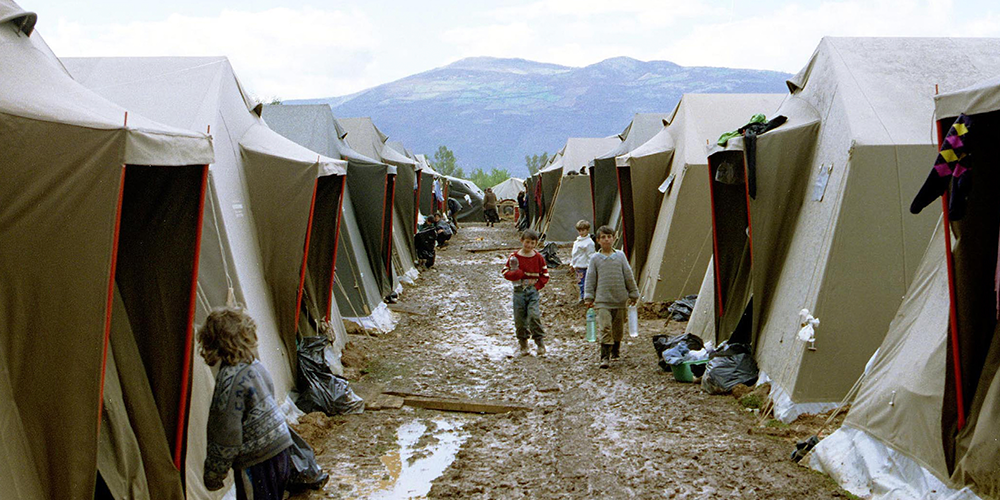
Simulating a zero-carbon 2050
The thousands of scientists around the world that make up the IPCC have created giant computer simulations of the world economy, called integrated assessment models, which offer hopeful pathways, in which dangerous changes to the world’s climate eventually stop. In all of these scenarios of the future world, humanity stops adding carbon dioxide (CO2) to the atmosphere by 2050. But they’re all dramatically different from the situation today.
The models offer perspectives of a huge shift to clean energy, with renewables becoming cheaper than fossil fuels. Energy production now makes up 35% of global emissions. We are already seeing the price of solar power dropping exponentially in the past decade with reports saying that it will get “insanely” cheap in the near future.
From farm animals to wild animals
“We must radically reduce the way we farm. We must change our diet. The planet can’t support billions of meat-eaters. To restore stability to our planet, we must restore our biodiversity, the very thing we have removed. It is the only way out of this crisis we have created. We must rewild the world.”
–David Attenborough, A Life on Our Planet
Another vision in the scenarios is a transformation of land use, which makes up 24% of global emissions. Changing the ratio of agricultural land to forests – rewilding – is a key element in reducing CO2 levels.
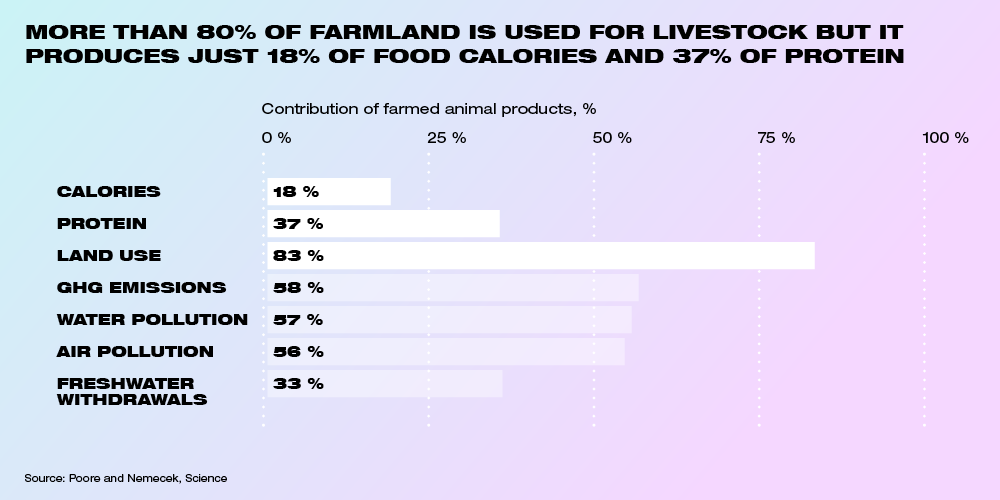
The food we consume plays an important role in determining the state of forests and soils. Meat, seafood, eggs and dairy are responsible for most of the emissions generated by food production, even though they contribute to only 37% of proteins and 18% of calories consumed by humans.
In addition to being responsible for 14% of emissions worldwide, the meat and dairy industries are also responsible for deforestation, habitat destruction, some pandemics, increased antibiotic resistance, inefficient land/water use, and huge amounts of animal abuse.
A scenario that could lead to a big shift on the supply side is an end to animal protein subsidies raising the price of meat. Some governments could even implement a meat tax if the environmental situation calls for it to disincentivize unsustainable lifestyles.
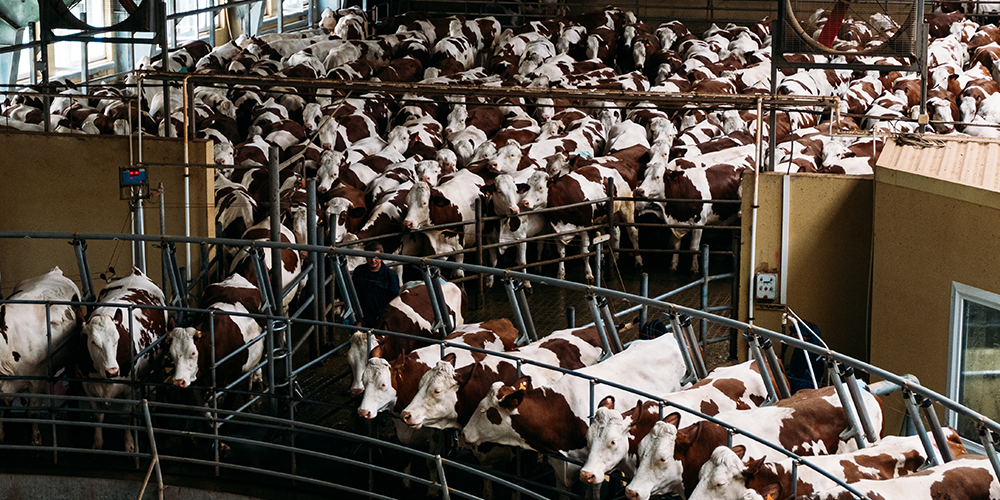
CO2 and methane too
The numbers in the IPCC report illuminated another interesting fact about greenhouse gases. For all the talk about carbon dioxide, methane is a much more powerful greenhouse gas, but one which lasts in the atmosphere for only about a decade. Methane has more than 80 times the warming power of carbon dioxide over the first 20 years after it reaches the atmosphere. Even though CO2 has a longer-lasting effect, methane sets the pace for warming in the near term. At least 25% of today’s warming is driven by methane from human actions.
Reduce methane emissions and you soon reduce methane levels; reduce methane levels and you reduce global warming. Around 60% of the world’s methane emissions are produced by human activities – with the bulk (25%) coming from agriculture.
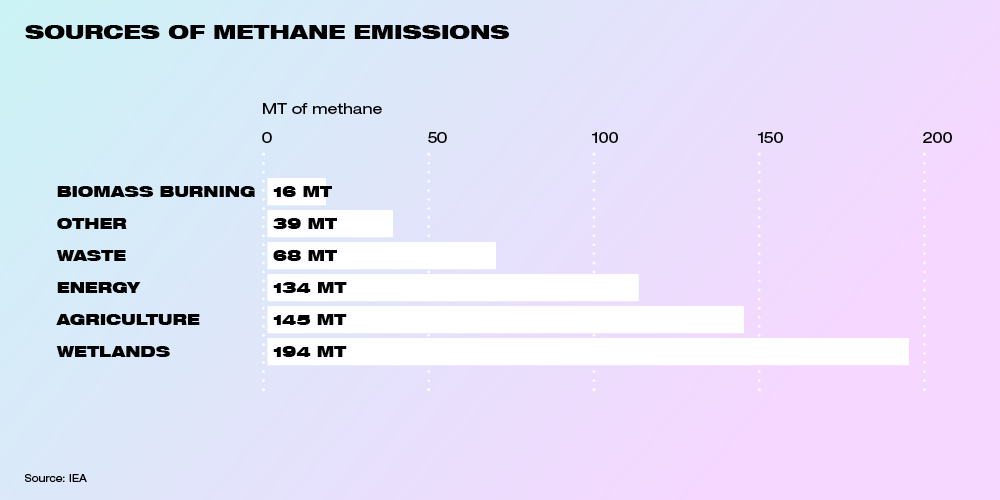
The micro-organisms in wetlands are the single largest natural source of methane. Agriculture is the largest anthropogenic or man-made source, even larger than all fossil fuel emissions combined.
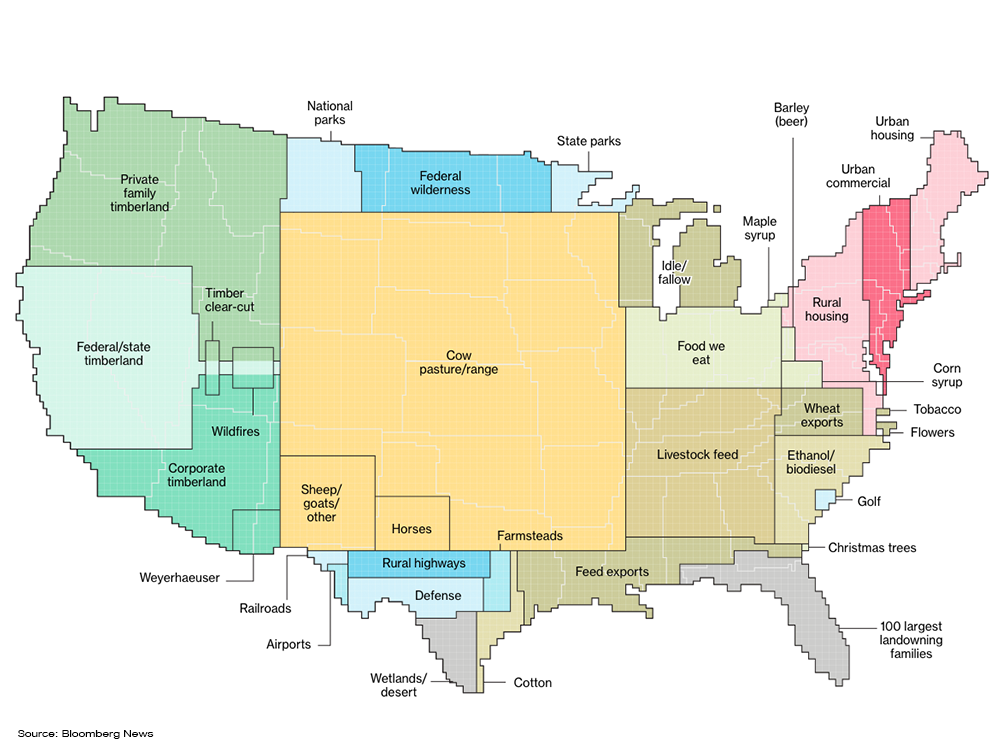
This map from a Bloomberg News article on how Americans use land illustrates just how much is devoted to agriculture in the United States. Reducing traditional farming could free up vast amounts of land for rewilding.
At the crux of the methane problem: farmland
A large part of the greenhouse gases emitted by meat and dairy farms, i.e. protein production, is methane. Both from ruminants (mostly cows and sheep) belching and the microbes in the manure of farm animals. Forests are natural methane sinks because of their soils that are rich in methanotrophs, microbes that eat methane.
83% of all farmland is used to farm animals and their feed. To get to a number like this, massive amounts of forest have had to be cleared to produce animal feed. The soil can’t absorb methane like the forest floor and the feed is used to grow more methane-producing livestock. So, one of the best ways to remove methane is to change agriculture and especially animal husbandry.
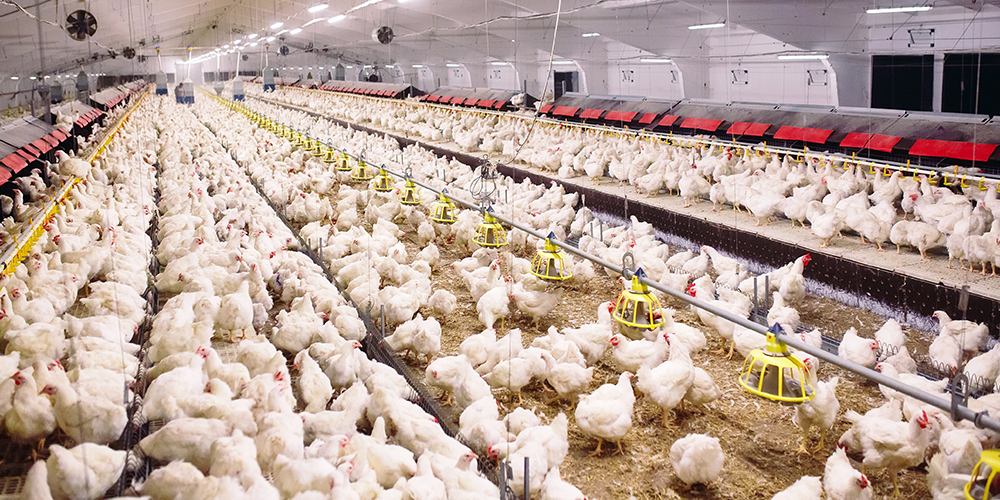
The majority of agricultural methane comes from ruminants, cows and the like. However, the organic matter in the manure of other animals like pigs and chickens also releases methane.
If humanity ate plants instead of meat, it would have a huge effect on the amount of methane produced. But as we discussed in an earlier article, for most people progress means eating more animal protein. There are also another two billion people on their way to inhabit the planet in 2050. Talks about reducing consumption or ending it all together become arguments about rights being infringed upon.
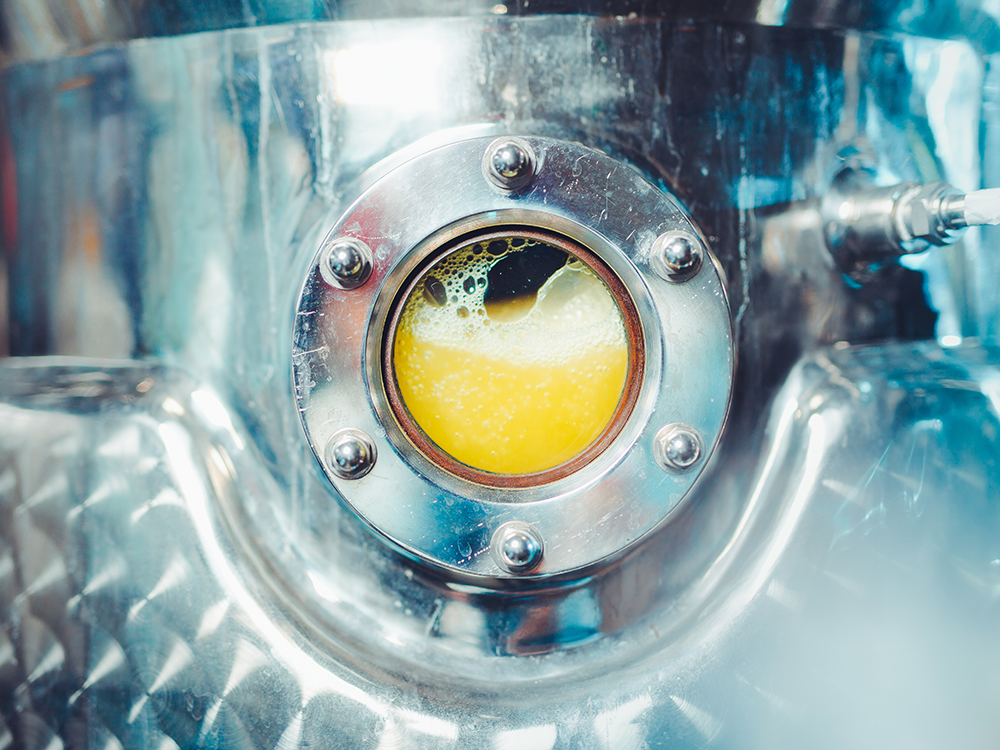
Growing food with a new kind of farm
“We are experiencing a revolution of food technology – and the agricultural sector as a whole – that corresponds to where information technology was in the late 1980s. The cards are being dealt now to the players who will lead an emerging new industry, and with it, a new era of humankind.
What does this all mean? It means that meat will continue to be eaten but killing animals can be skipped. It means eggs will still be eaten but no poultry will be required to produce them. It means ice cream will be enjoyed as before but without the cows.
The technology already exists to do all this.”
–Pasi Vainikka, CEO of Solar Foods
There are ways to change how we farm or rethink it completely to not be dependent on land. There are technological land-saving tweaks like vertical farms or hydroponic farms, but a solution that could dramatically change our land use is growing food (and especially protein) with the elements found in air. This is what we are doing at Solar Foods with our product Solein, created out of thin air.
A Solein ‘farm’ that would produce the same amount of protein would emit no methane. It is not plant-based but microbe-based instead. And the feed it uses to grow, along with some additional basic nutrients, are all found in simple air. It uses a tiny fraction of the water, land and feedstock needed for meat or even plants.
Alternative sources of protein are a solution that will allow people to maintain their standard of living, abundant in proteins, while not adding to the huge list of environmental and ethical problems.
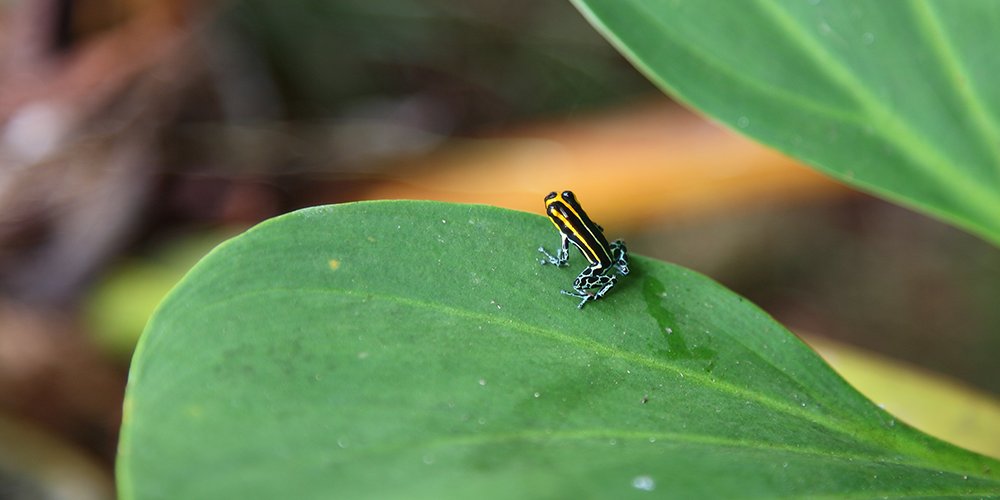
“You can’t scale up a planet, so we need technologies that can.” – Pasi Vainikka
If we transform how we farm, we change how we use land and start rewilding. That is a step towards a more biodiverse, stable planet that can also sustain the billions of lives of future generations.
Read more about the future of food at Solar Foods.

